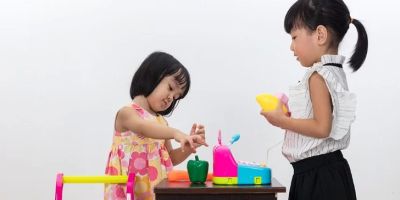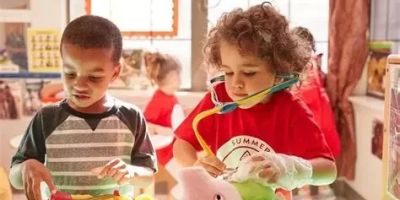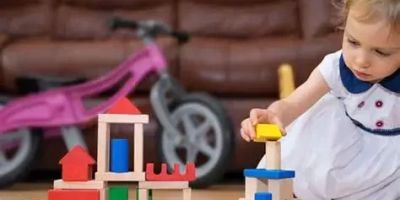Best Toy Kitchens for Imaginative Play
As a parent, one of the most exciting things you can do is encourage your child's imagination. Imaginative play not only helps children develop creativity and problem-solving skills, but it also supports social-emotional development as they engage in role-playing activities. One of the most popular and enriching toys for fostering imaginative play is a toy kitchen. Toy kitchens allow children to act out everyday scenarios and explore concepts of cooking, sharing, and teamwork. In this article, we’ll explore the best toy kitchens that offer both fun and educational value for your little ones.
1. Why Toy Kitchens Are Great for Imaginative Play
There’s something magical about a toy kitchen. Whether it’s pretending to cook meals for family and friends or acting out dinner parties, toy kitchens allow children to mimic real-world scenarios. They help to develop life skills such as understanding how to follow instructions, manage resources, and cooperate with others. These kitchens are often the backdrop to learning about food, nutrition, and even cultural differences as children pretend to make dishes from around the world.
1.1 Promoting Social Skills
Children love to share experiences with others, and a toy kitchen provides the perfect setting for collaboration. When multiple children play with a toy kitchen, they learn how to share space, take turns, and work together to create something, whether it's a pretend meal or a tea party. These types of interactions are crucial for building positive social behaviors that will help them throughout life.
1.2 Enhancing Creativity and Problem-Solving Skills
Imaginative play with a toy kitchen stimulates the creativity of young minds. It’s not just about mimicking real-life actions—children will often invent their own recipes, challenges, and stories as they play. This kind of play enhances problem-solving skills because children must think critically about what comes next in their imaginary scenarios. Do they need to find a different ingredient? Or perhaps they need to adjust their cooking time? These small, yet significant moments improve a child’s ability to think flexibly and adapt to new situations.
2. Features to Look for in a Great Toy Kitchen
When choosing a toy kitchen, there are several important factors to consider. The goal is to find a toy that not only captures your child's attention but also supports their development. Below are key features to look for when purchasing a toy kitchen.
2.1 Size and Space Considerations
Before making a purchase, it’s essential to think about the available space in your home. Toy kitchens come in various sizes, from compact, countertop models to larger, more elaborate setups. If you have a small living area or apartment, a compact kitchen might be a better choice. For larger spaces, a more expansive kitchen with additional features like storage, multiple burners, and sinks may be ideal.
2.2 Realistic Features and Details
Many of the best toy kitchens have realistic features such as turning knobs, ovens with doors that open and close, and working faucets. These details not only add to the realism but also help children develop fine motor skills as they practice turning knobs or opening doors. Some kitchens even come with play food sets that mimic real fruits, vegetables, and utensils, making the play experience even more lifelike.
2.3 Durability and Safety
Since toy kitchens are likely to be used regularly, it's essential to choose a model made from durable materials that can withstand the wear and tear of active play. Look for kitchens made from sturdy wood or high-quality plastic that can handle frequent handling. Additionally, ensure that the kitchen complies with safety standards to prevent any choking hazards or sharp edges.
3. Top Toy Kitchens for Imaginative Play
Now that we know what to look for in a great toy kitchen, let’s take a look at some of the best options available on the market today. These kitchens are highly rated for their quality, design, and educational value.
3.1 KidKraft Ultimate Kitchen
KidKraft’s Ultimate Kitchen is a favorite among parents and children alike. This kitchen is large enough to accommodate multiple children playing at once, and it’s packed with realistic features like a refrigerator, stove, microwave, and sink. The design is contemporary and vibrant, and the kitchen comes with plenty of storage space for pretend food and kitchen accessories. The high-quality wooden construction ensures that this toy kitchen will last for years of imaginative play.
3.2 Melissa & Doug Wooden Chef's Pretend Play Kitchen
Melissa & Doug are well-known for producing high-quality toys, and their Wooden Chef’s Pretend Play Kitchen is no exception. This kitchen is designed with bright colors and durable wood construction. It features an oven, sink, refrigerator, and stovetop, complete with turning knobs and a functional faucet. The open storage areas allow children to organize their pretend food and accessories, encouraging tidy play. This is an excellent choice for young children looking to enhance their imaginative play.
3.3 Step2 Lifestyle Custom Kitchen
For those with limited space but who still want an impressive toy kitchen, the Step2 Lifestyle Custom Kitchen is a fantastic option. This kitchen has a compact design but doesn’t skimp on features. With realistic cooking sounds, a working faucet, and plenty of storage, children will enjoy endless hours of imaginative play. The vibrant colors and modern design make it a popular choice for contemporary homes, and the durable plastic ensures that it’s built to last.
3.4 IKEA DUKTIG Play Kitchen
IKEA’s DUKTIG Play Kitchen is a sleek, minimalist option that fits well in modern homes. Made with high-quality, sustainable wood, this kitchen is simple yet functional, with a sink, stove, and plenty of storage space. It’s a great choice for parents who value both aesthetics and durability. Its simple design allows children to get creative with how they set up their kitchen and play, and it’s small enough to fit in tighter spaces.
4. How Toy Kitchens Promote Learning Through Play
One of the greatest benefits of toy kitchens is their ability to promote learning through play. When children pretend to cook, they are practicing skills that are useful in the real world, such as measuring, sorting, and organizing. These activities enhance cognitive development and help children understand cause and effect as they observe what happens when they "cook" their pretend meals.
4.1 Boosting Cognitive Skills
When children play with toy kitchens, they engage in activities that require them to think critically. For example, figuring out how to combine pretend ingredients or organizing their pretend food in a certain way can improve their problem-solving skills. Additionally, these tasks help children understand important concepts such as sequencing, time management, and spatial relationships.
4.2 Encouraging Teamwork and Communication
Toy kitchens also provide opportunities for children to practice teamwork and communication. As they engage in role-play with siblings or friends, they learn to take turns, collaborate, and communicate effectively. These interactions build social skills that will serve them well throughout their lives.
5. Final Thoughts on Choosing the Best Toy Kitchen
Choosing the right toy kitchen can seem overwhelming with so many options available, but by considering your child’s age, preferences, and the features that are most important, you can select a kitchen that will provide endless hours of imaginative play. Whether you opt for a wooden kitchen like the KidKraft Ultimate Kitchen or a compact model like the IKEA DUKTIG, you’re sure to find a piece that will spark creativity and enhance your child’s learning experience. As they pretend to cook, bake, and serve meals, they will develop important life skills and create memories that last a lifetime.





